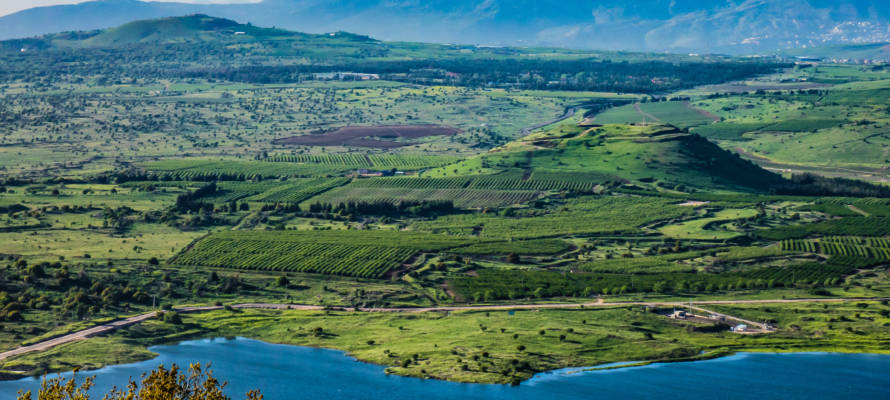Israel staved off an attack by four Arab armies, beating back Syrian forces and taking control of the strategically essential Golan Heights region in Israel’s north.
By Rabbi Ari Enkin, Rabbinic Director, United with Israel
This weekend begins celebrations for the 52nd anniversary of Israel’s victory in the Six-Day War. After a short war of just six days, Israel quadrupled its size having captured Biblical Judea and Samaria, Jerusalem, the Sinai Peninsula and the Golan Heights. As much is being written in honor of the 52nd anniversary of the liberation and unification of Jerusalem, I will take this opportunity to write about a different milestone that we will be celebrating: the Golan Heights victory.
The Golan Heights (Ramat Hagolan in Hebrew) or simply the Golan, spans about 1,800 square kilometers (690 sq mi) and is the area captured from Syria during the Six-Day War, territory which Israel annexed in 1981. Jews have been settling the Golan Heights well before the State of Israel was created. In the 1890s land was purchased throughout what would be known as the Golan Heights by Zionist organizations based in Romania, Bulgaria, the USA and England.
However, due to financial hardships and Ottoman bureaucracy (Jews were settling the Golan Heights even before the British came on to the scene!) most communities did not succeed. By 1920, the Jews had been completely chased away from the Golan Heights due to the anti-Jewish riots of 1920. (Yes, anti-Jewish riots existed long before there was a “West Bank,” a State of Israel, or even a Balfour declaration to upset Arabs!).
Since the 1967 Six-Day War, the western two-thirds of the Golan Heights has been administered by Israel, whereas the eastern third remains under control of Syria. Construction of Israeli communities began in the territory captured by Israel almost immediately after the war. The status of the Golan Heights was that of “military administration” until Israel annexed the Golan in 1981 thereby extending Israeli civil law and administration throughout the territory.
This move was condemned by the United Nations Security Council but that’s no big surprise as the UN finds every opportunity possible to condemn Israel and has done so more than any other member nation in the world. Israel maintains it has a right to retain the Golan, even citing the text of UN Resolution 242, which calls for “safe and recognized boundaries free from threats or acts of force.”
The Golan Heights welcomes tourists with numerous archeological sites, mountains, streams and waterfalls. Throughout the region 62 ancient synagogues have been found dating back to the Roman and Byzantine periods. In Katzrin, the administrative and commercial center of the Golan Heights, there is an archaeological site where the remains of a Talmud-era village and synagogue have been reconstructed.
Also popular to see when visiting the Golan Heights is the Golan Heights Winery, a major Israeli winery, and the mineral water plant of Mei Eden. One can tour these factories as well as factories of oil products and fruit products. A ski resort on the slopes of Mount Hermon features a wide range of ski trails and winter activities. Israel may be the only place in the world where you can ski in the morning and lie on the beach in the afternoon.
On March 25, 2019, U.S. President Donald Trump proclaimed that “the United States recognizes that the Golan Heights are part of the State of Israel,” making the United States the first and only country to recognize Israeli sovereignty over the annexed regions of the Golan Heights.
On April 23, 2019, Israel Prime Minister Benjamin Netanyahu announced that a new community in the Golan Heights will be named after U.S. President Donald Trump.
